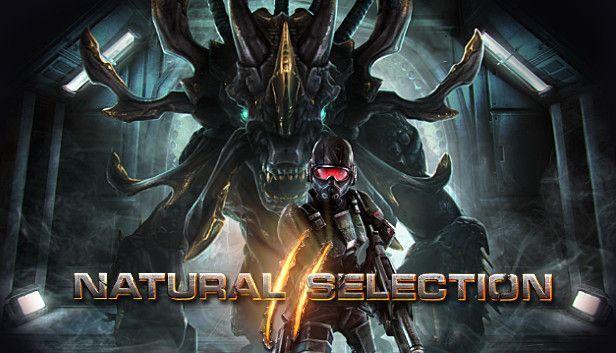Netrunner and Vulnerability
A new year resolution here at UWE is to blog more often, and about more varied topics. Often, these posts will not have direct relevance to NS2. But they will all give you an insight into the minds of the people working on NS2, and should be interesting to boot! NS2 related posts will continue as they always have. Starting us off this week is Brian 'Murphy' Cronin, Lead Programmer and Number One Brian:
Defense
When thinking about defense, the castle instantly comes to mind. A self contained city able to withstand attack for months at a time. However, as demonstrated in the most famous battle of all time, Helm’s Deep from Lord of the Rings, even the strongest castle has it’s vulnerabilities.
A popular game genre in recent years is tower defense. They often have a few different types of towers and monsters. These games are essentially rock, paper, scissors. Fire towers do extra damage against orcs but less against the rock giants. The arrow tower does a lot of damage but only to 1 target at a time while the catapult does low damage to an area of the world. And of course, you have to make sure to have some anti-air towers up for the air round.
Tower defense games are a lot of fun but they are hard to be really good at, or really bad. Generally, as long as you keep building a variety of towers, you are going to do well. While definitely featuring defense, they don’t entirely capture the feeling of vulnerability.
Netrunner
Netrunner was a collectable card game released in 1996. While not a major success, it gained a strong cult following. Luckily, the game was re-released in 2012 as Android: Netrunner. The game features bluffing, deduction, unique character identities with special powers, 2 player asymmetric play, deck building, a cyberpunk theme (before it was cool...), and a variety of other game mechanics.

The objective of Netrunner is for either player to score 7 agenda points or eliminate your opponent from the game. The Corp player must install agenda cards face down on the table in a remote server and then advance them a certain number of times in order to score them. While this is happening, the Runner player is attempting to run against these servers in order to access cards and potentially steal agendas and their points. Of course, the Corp can defend these servers from attack.
Vulnerability and Flexibility
What makes Netrunner so compelling to me and why it is a fantastic demonstration of vulnerability is because the remote servers are not the only servers that the Runner may run against. The Corp player also has a server for their draw stack (R&D), discard pile (Archives), and even their hand (HQ). The Runner can run against these servers as well. They are less likely to steal an agenda card on these servers, but not much less likely. I have lost many games as Corp because I didn’t put enough defense in front of my HQ or R&D.
The way each type of server is accessed is very different, changing how much the Corp should defend them based on the context within each game.
The Runner simply looks at and possibly trashes or steals a card from a remote server while a card from the HQ is accessed at random from the hand. Only the top card is accessed from the R&D meaning that there is no reason to run against it multiple times in one turn. And all cards from the Archives are accessed, meaning ALL agenda cards are stolen (it is unlikely the Corp is going to trash an agenda card, but in some cases they can’t help it and may be unaware they have trashed one at all).
In order for a game to support vulnerability, it must also be very flexible and open. The number of servers that the Runner can attack combined with the different ways the servers function allow for great flexibility in play style for both the Corp and Runner.
The Start
The first few turns for the Corp depends heavily on their starting hand. If the Corp player starts with 3 agenda cards and 2 defensive Ice cards, their opening turn may be to put an Ice card in front of the server representing their hand of cards to defend those 3 agenda cards until they can install them into remote servers safely.

Of course, the Runner will see right through this opening move. The Runner may install an Ice Breaker program and attempt a run against HQ (the Corp’s hand) on their first turn. If successful, their chances of randomly selecting one of the three agenda cards is high.
This is where we can start to see how vulnerable the Corp is to attack. Another scenario for the Corp’s opening move is to install one of those agendas onto the table and defend it with one of the Ice. Then with their final click (A unit representing work or an action during a turn), they draw another card into their hand.
This would result in the Corp having 5 cards in hand (the Corp always draws 1 card at the start of their turn for free). Assuming the Corp did not draw more agenda cards (unlikely), they will now have 2 agenda cards and 3 other cards. So the odds of the Runner randomly selecting an agenda card is smaller. This is another form of defense in Netrunner.
Often it feels like a waste to install Ice in front of R&D (the draw stack) as the Corp. You can’t score any agenda cards that are in your R&D and the chances that the Runner will steal one feels small. But in many games I play, the Runner steals at least 1 agenda card from an undefended R&D before the Corp wises up.
Cost and Balance
Everything has a cost. Most of the time that is either credits (money) or clicks (actions). The Corp is more limited on clicks (they have 3 vs the Runner’s 4) while the Runner tends to need cards a bit more. Most of the time, you can feel safe building up a pool of credits, but even this is not certain in Netrunner. For example, the “Account Siphon” card allows the Runner to steal credits from the Corp instead of accessing a card on a run against the HQ server.

But such a powerful attack also has a cost for the Runner. They receive two tags. These tags cost 2 credits and 1 click to remove. A tag is a big vulnerability for the Runner as the Corp can cause a lot of damage and even attack the Runner’s cards while tagged.
Clearly Oscar Wilde understood Netrunner when he said “Everything in moderation, including moderation”. If the Corp plays too balanced of a game, the Runner will simply put all their eggs into one basket and break through the server most likely holding an agenda. Sometimes a balanced approach is not best.
As the Corp, you want to have at least 1 Ice card down in front of your draw stack and your hand and at least 2 Ice cards down in front of each remote server. This is expensive to do. And then you must decide if you want to build one “mega-server” with 3 or 4 defensive Ice cards in front or spread out the Ice a bit into 2 or 3 remote servers. The mega-server is more likely to hold off a run but can the Corp survive long enough with a hand full of agendas until the server is complete?
If not building a mega-server, the Corp should consider building many small servers just to force the Runner to waste time running against servers not hosting any agendas.
The Runner loses if they take damage and have no more cards in hand. The cards represent the Runner’s health.
Agendas are not the only type of card that can be installed in a remote server. The Corp may also install assets. These assets are always good for the Corp and sometimes, very bad for the Runner. This is where we can start to see the Runner’s big vulnerability. Their hand.

“Project Junebug” is a good example of an asset that can totally destroy the Runner. Most assets cannot be advanced, but Project Junebug can. For every advancement token on the card, the Runner suffers 2 damage when accessed. So Junebug is going to look like an agenda card that the Corp is trying to score which motivates the Runner to steal it fast. If the Corp can place 3 advancement tokens on Junebug, it is likely game over for the Runner (hand limit is 5).
Traps like this prevent the Runner from always running without fear. They are vulnerable to attack when they don’t have all the information.
The Future
Like any game, Netrunner could eventually become stale, resulting in the same few strategies dominating tournament play. The Project Junebug card is a good example. After a while, it becomes too predictable when Project Junebug is being played.
Netrunner is a “living card game”. This means that new data packs are coming out every month to change things up. These packs will add more vulnerability as strategies must adjust and memory of all the older cards fade.

For example, Braintrust is an agenda card in the “What Lies Ahead” data pack that supports a variable number of advancement tokens. This type of card throws off the usual strategy of how to detect a card like Project Junebug.
If you have played Netrunner, I would love to hear your war stories in the comments. Thanks for reading this very long post!







